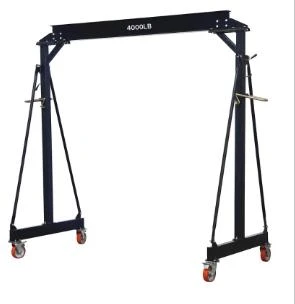industrial equipment relocation
Industrial Equipment Relocation Challenges and Solutions
Relocating industrial equipment is a significant undertaking that requires meticulous planning, coordination, and execution. Whether a company is moving its manufacturing plant, upgrading its facilities, or shifting operations to a new location, the process of industrial equipment relocation presents various challenges that need careful consideration. This article explores the key aspects of relocating industrial equipment, including the challenges faced, the importance of proper planning, and effective strategies for a successful relocation.
Understanding the Challenges
One of the primary challenges in industrial equipment relocation is the sheer scale and complexity of the machinery involved. Industrial equipment often includes heavy machinery, unique tools, and specialized instruments that are not only cumbersome but also sensitive to damage. The risk of equipment malfunction or damage during transit is a critical concern for companies, especially when dealing with high-value assets.
Additionally, the logistical aspects of relocation can pose significant hurdles. Transportation methods need to be carefully chosen based on the type and size of the equipment, and appropriate routes must be planned to avoid obstacles. Moreover, scheduling the move while minimizing downtime is essential to avoid disruption to operations. Coordinating the relocation of multiple machines or systems further complicates this already challenging process.
Importance of Proper Planning
Given these challenges, proper planning is vital for a successful industrial equipment relocation. Organizations must conduct a comprehensive assessment of the equipment being moved. This includes inventorying all tools and machines, evaluating their condition, and determining the requirements for disassembly and reassembly. Additionally, assessing the new location for suitability, including space, infrastructure, and utility connections, is crucial.
industrial equipment relocation

A detailed project timeline should be developed, outlining each step of the relocation process, from initial preparation to final installation in the new location. Engaging a skilled team that includes project managers, engineers, and logistics experts can significantly enhance the planning process. Communication among all stakeholders—including employees, suppliers, and contractors—is essential to ensure that everyone is on the same page and potential issues are addressed proactively.
Effective Strategies for Relocation
Once the planning phase is complete, several strategies can facilitate a smoother relocation process. First, implementing a phased approach can be beneficial. By moving equipment in stages, companies can better manage logistics and reduce the risk of operational downtime. This allows for the gradual setup and testing of equipment at the new site while continuing operations at the original location.
Second, hiring professional relocation services that specialize in industrial equipment can greatly ease the burden. These experienced professionals have the expertise and resources required to handle heavy machinery safely, ensuring compliance with regulations and industry standards. They can manage disassembly, transport, and reassembly, mitigating the risks associated with DIY relocations.
Finally, thorough testing and quality assurance checks should follow the relocation. Conducting performance evaluations on the equipment ensures that everything is functioning correctly in the new setting. This step is critical for identifying any potential issues early on, allowing for timely interventions before full-scale operations resume.
Conclusion
Industrial equipment relocation is a complex process fraught with challenges that require careful planning and execution. Organizations that recognize the importance of a strategic approach and invest in the right resources can navigate the relocation successfully. By understanding the challenges, implementing effective planning and strategies, and utilizing professional services, companies can ensure that their industrial equipment moves smoothly, minimizing downtime and maintaining operational efficiency. In a competitive industrial landscape, effective relocation practices can play a pivotal role in sustaining productivity and driving growth.
-
4000 lb Gantry Crane | Adjustable, Heavy-Duty Lifting SolutionsNewsAug.31,2025
-
Portable 2000 lb Gantry Crane | Heavy-Duty & AdjustableNewsAug.30,2025
-
Versatile Lifting Solutions with Gantry and Overhead CranesNewsAug.29,2025
-
The Versatile Mobile Gantry Crane SolutionNewsAug.29,2025
-
Reliable Movement with Heavy Machinery Skates and RollersNewsAug.29,2025
-
Reliable Lifting Performance with 2000 lb Gantry Crane and 2 Ton Overhead SystemsNewsAug.29,2025
-
Maximize Lifting Efficiency with PML Magnetic LiftersNewsAug.29,2025
